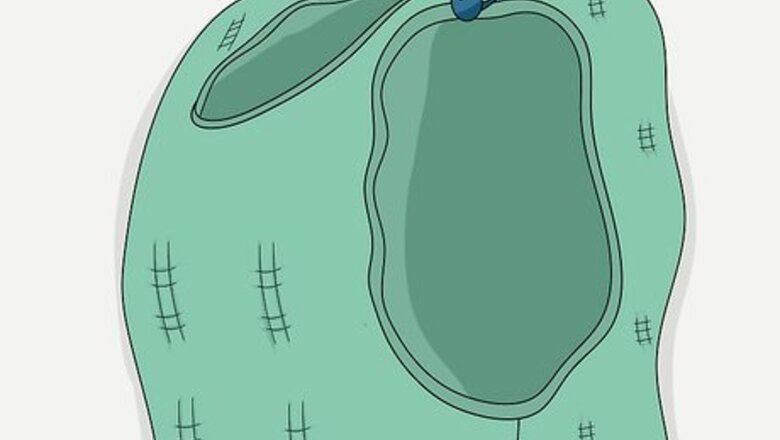
views
Picking up Stitches at the Shoulder Opening
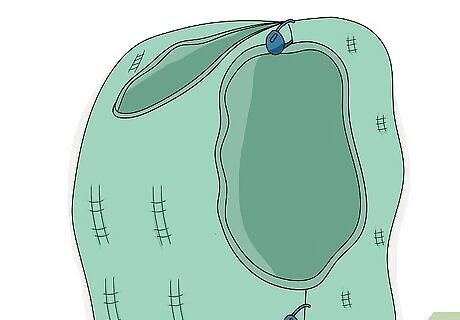
Place a stitch marker at the top and bottom of the armhole. Insert an open stitch marker through 1 of the stitches on the top and on the bottom of the armhole opening, and then close it to lock it. Position the marker about 0.5 inches (1.3 cm) from the edge of the armhole so that it will not get in your way when you are knitting around the opening. If you do not have any stitch markers, then you can also tie a piece of scrap yarn through the stitches.
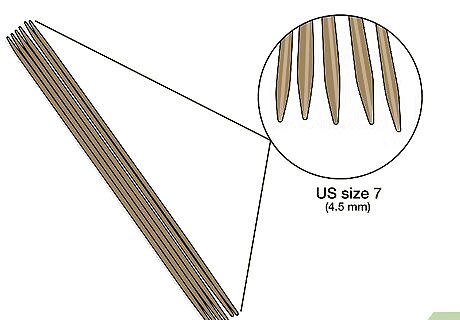
Use the same size double-pointed needles you used to knit the sweater. This will help to ensure that your sleeves look the same as the rest of the sweater. However, if you are following a pattern and it specifies a different size of needles, then use what the pattern tells you to use. For example, if you used a pair of US size 7 (4.5 mm) circular needles, then use the same size double-pointed needles.
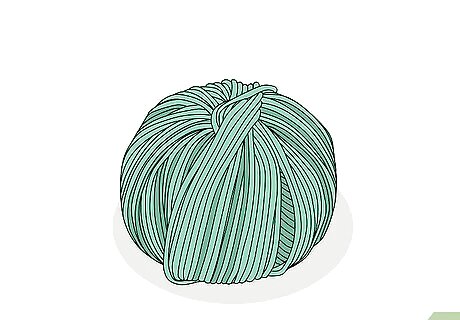
Choose the same kind of yarn you used for the rest of the sweater. To keep the look of your sleeves consistent with the rest of the sweater, don't use a different style, texture, or color of yarn for the sleeves. Use the same exact kind or as close as you can get! For example, if you knit the body of the sweater with a hunter green, medium-weight wool yarn, then use the same type for your sleeves.

Insert a double-pointed needle into 1 stitch at the top of the sleeve. Push the tip of the double-pointed needle in your right hand into the first stitch in the armhole opening. This will be next to the stitch marker you placed to indicate the top of the sleeve. At this point, both of your needles will be empty. You will be picking up 1 stitch at a time to fill them.
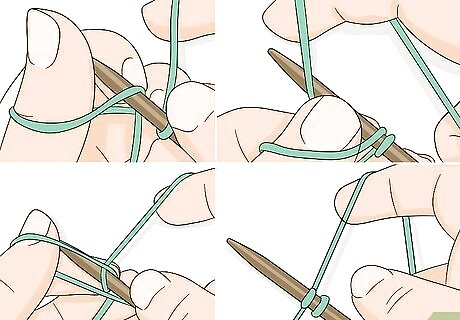
Loop the yarn over your needle and pull through. To pick up the stitch, bring your working yarn over the end of the right-hand needle. Then, use the left-hand needle to lift the stitch next to it and pull the yarn through the stitch. You should now have 1 stitch on your right-hand needle. Repeat this sequence all the way around the sleeve opening until you have picked up all the stitches.

Distribute the stitches evenly among your double-pointed needles. You should have the same number of stitches on each of your double-pointed needles, but make sure to keep 1 needle empty to use as your working needle. For example, if you have 5 double-pointed needles, then distribute the stitches among 4 of the needles, such as 15 stitches per needle if you have a total of 60 stitches.
Working a Basic Drop-Shoulder Sleeve in the Round
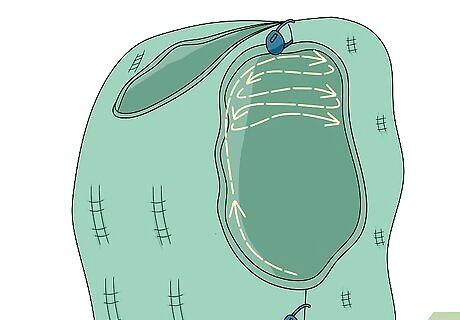
Follow your pattern's instructions on how to work the sleeve. You may need to follow a very specific stitch sequence with increase and/or decreases to get the sleeves right. If you used a pattern to knit the body of the sweater, then make sure to use those same instructions to knit the sleeves. For example, a pattern may provide specific guidelines for when to decrease, how much to decrease, and how long the sleeve should be when it is completed. The pattern may also provide instructions for how to work the stitches to create a special design or stitch in the sleeve, such as cables.
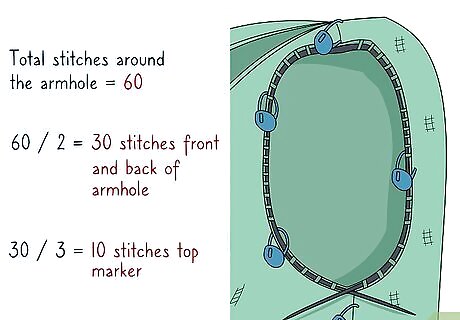
Use the total number of stitches to identify where to work the shoulder. Working the shoulder area is optional, but it can help to make your sweater look more fitted. To figure out where to knit to for the shoulder, divide the total number of stitches in your round by 2, and then divide that number by 3. Count that number of stitches from either side of the top marker you placed and put a stitch marker there. For example, if you have a total of 60 stitches, divide that by 2 to get 30, then divide 30 by 3 to get 10. Place a stitch marker 10 stitches from the top marker on the right and on the left.
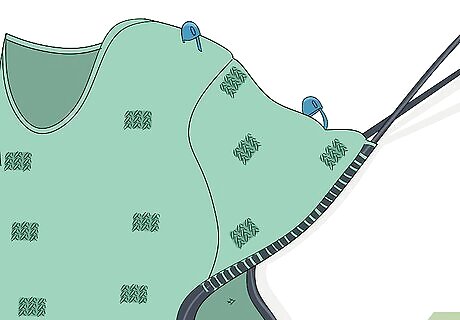
Work back and forth between the stitch markers to shape the shoulder. After you have determined where to work the shoulder, begin knitting back and forth between these stitch markers. Knit across the stitches in this section, and then turn your work around and knit back in the opposite direction. You can work the shoulder for a few rows just to provide a small cap sleeve and then start working the sleeve in rounds. If you only want a short sleeve on your sweater, you can work these short rows until the cap sleeve is the desired size and then bind off.
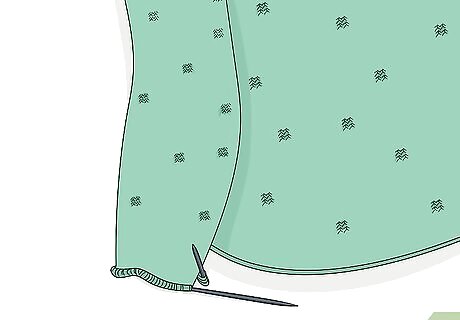
Knit until the sleeve is the desired length. You may knit the sleeve until it reaches a specific measurement, or measure the sleeve on your body if you are making the sweater for yourself. You can use a tape measure or try on the sweater to check the sleeve length. Make sure to place caps on the ends of the double-pointed needles if you plan to try on the sweater before the sleeve is finished. These are small gummy textured items that slide right onto the ends of your double-pointed needles.
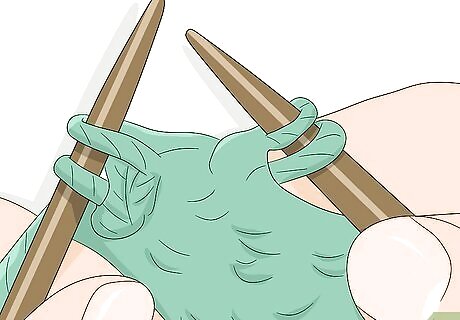
Bind off the stitches to complete the sleeve. When the sleeve is the length you want it to be, begin binding off the stitches. To do a basic bind off, knit the first 2 stitches in the round. Then, use the left-hand needle to lift the first stitch you knit onto the right-hand needle over the second 1. Then, knit 1, and lift the first stitch over the second stitch again. Continue to bind off in this fashion until you have bound all of the stitches. When you reach the end of the bind off round, tie off the last stitch by making a knot through it and then cut the excess yarn.
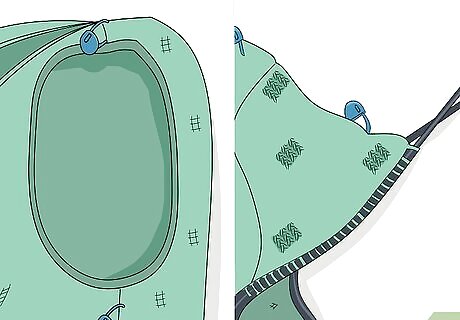
Repeat the process for the other sleeve. Once you have finished knitting 1 sleeve, start the process over again to complete the second sleeve. Make sure to follow the exact same process for the other sleeve, or your sweater's sleeves will look different.
Choosing Specific Types of Sleeves to Knit
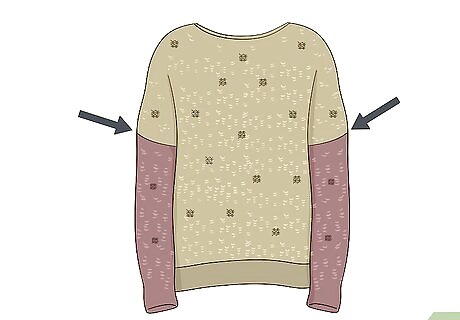
Choose drop-shoulder sleeves if you're unsure about the measurements. A drop-shoulder sleeve is possibly the most forgiving style, and it is also quite simple to knit. You can knit this type of sleeve in the round or flat. Keep in mind that a finished drop-shoulder sleeve can look oversized, so this is best for a casual sweater.
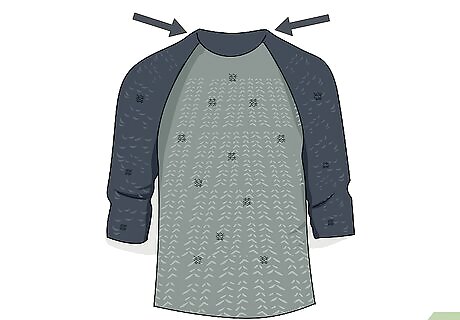
Opt for raglan sleeve for something sporty and casual. Raglan sleeves are the easiest type of sleeve to knit. They are also the least fitted type of sleeve, so they will have lots of give and this creates a casual look. This type of sleeve can be worked flat or in the round. If you work them flat, then you will need to sew them into your finished sweater body. You will need to use a series of decreases to make the sleeves smaller moving toward the cuff, which a pattern will provide.
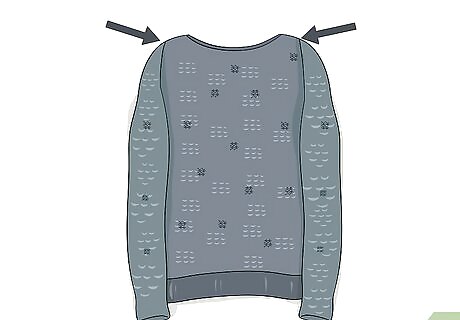
Go with set in sleeves for a close fitting garment. If you want the sleeves on your sweater to be very well fitted, then set in sleeves are your best option. These sleeves are knitted as flat pieces and then sewn into the edges of the armhole opening, which is also left flat. This type of sleeve is more technically difficult, but when done properly the finished sweater will look much neater than it would with a different type of sleeve.
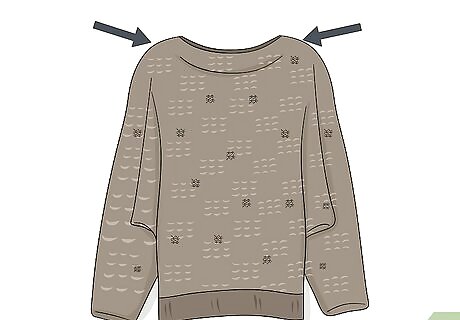
Try dolman sleeves to knit the sweater in a single piece. This type of sleeve is knit along with the sweater. You start the sweater by knitting the cuff of 1 sleeve, then work the entire sleeve, the body of the sweater, and then the other sleeve. As a result the sleeves will be at right angles to the sweater and very loose fitting. This is a great option if you want to create an oversized or kimono-style sweater.















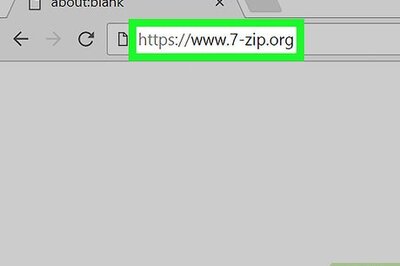
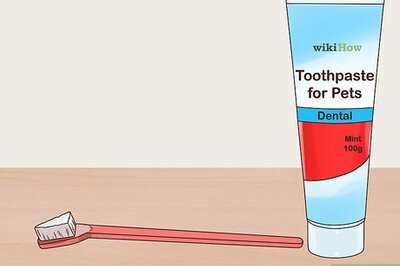



Comments
0 comment